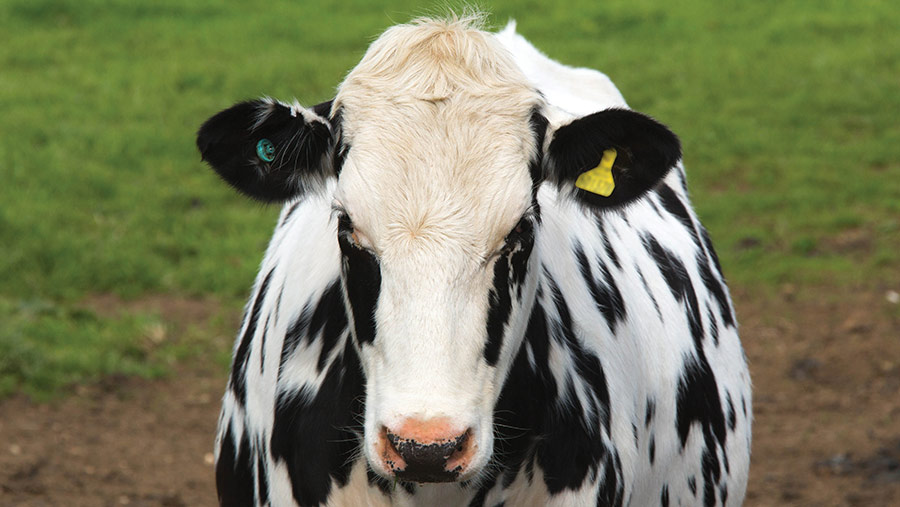Excess copper found to impair liver function in heifers
 © Tim Scrivener
© Tim Scrivener Feeding excess copper to dairy heifer calves can compromise liver function, leading to poorer fertility and lower milk yields in first lactation.
This is according to AHDB-funded research at Harper Adams University, which followed on from earlier research into copper toxicity in cows.
Heifers fed high levels of copper initially resulted in better growth rates and earlier puberty.
After calving, however, it was a different story, said the university’s Prof Liam Sinclair.
See also: A guide to feeding copper to dairy cows
“Their liver function was affected. The heifers had a reduced pregnancy rate, lower milk yield and fertility was compromised in their first lactation,” he said (see “Performance of dairy heifers fed dietary copper”).
The study involved 80 heifers reared from four to 21 months of age.
They were split into two groups fed either recommended (R) levels of copper, or high (H) levels.
Initial copper levels in liver tests were very high, said Liam, but even higher in the H group than R group. However, there was no difference in blood plasma copper, he added.
The H group of heifers grew well, achieving 0.79kg/day, compared with 0.76kg/day for the R group.
They also had their first observed oestrus earlier and were heavier at mating.
“Copper is a good iceberg indicator of mineral supplementation on a dairy farm. But blood samples are not a good indicator of excess copper and toxicity – you need to test the liver,” he pointed out.
Performance of dairy heifers fed dietary copper |
||
| Item | Recommended | High |
| Liveweight gain (kg/day) | 0.76 | 0.79 |
| Body condition score change | 0.09 | 0.26 |
| First observed oestrus (days) | 209 | 171 |
| Liveweight at mating (kg) | 349 | 354 |
| Pregnancy rate to first and second services (%) | 91.2 | 73.7 |
| Number of services/pregnancy | 1.5 | 2.0 |
| Source: McCaughern et al 2024 | ||
Prof Liam Sinclair was speaking at the British Society of Animal Science’s dairy cow nutrition conference (10-11 January, Telford)
